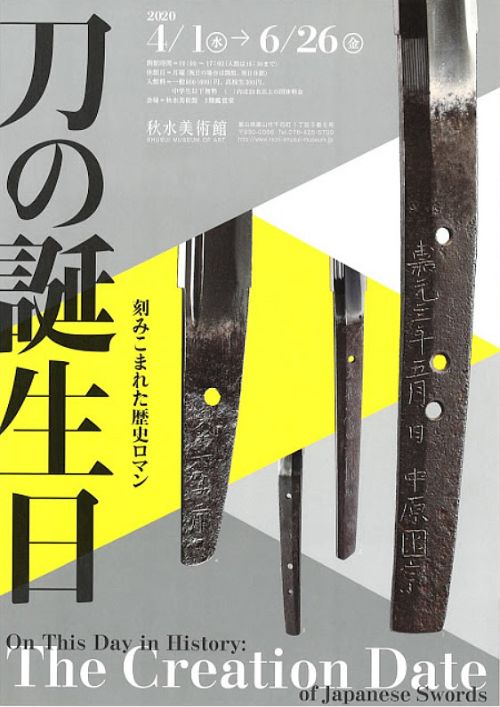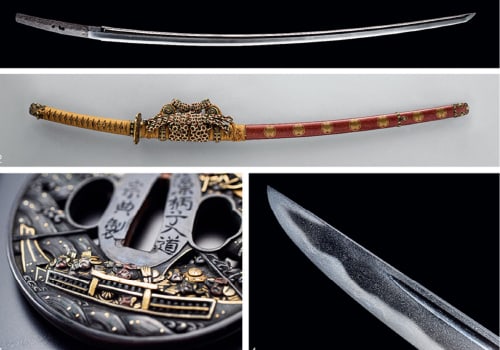Japanese swords have roughly a thousand years of history, dating back to the mid Heian period (10th and 11th c.) and continuing to today. Over the past millennium, countless swordmakers throughout Japan have worked to create these swords, and while some of these swords were owned by famous figures, known even centuries later, many more have been forgotten – nameless swords that were nonetheless an important part of life for people whose names have likewise been lost to time.
This exhibition focuses on swords from the museum collection that have inscriptions clearly indicating when they were made, presented alongside background information about events and culture from when each sword was produced. We hope that visitors appreciate the many years of history possessed by each of these swords, and that this might serve as an opportunity to consider the cultural and historical contexts that these swords came from.
image 1. Tachi Sword Signed “Bizen no Kuni Sakon no Shogen Nagamitsu (Zo) Einin Go Nen San Gappi (Omote)” (“(Made by) Nagamitsu, Sakon no Shogen (Third-Rank Officer at Sakon-e-Fu) of Bizen Province, March 1297 (Front)”) • 2. Itomaki Tachi Koshirae (String-Wrapped Fittings and Mountings for Tachi Sword) Featuring Gold Nashiji (Pear-Skin Lacquered) Saya Scabbard with Wood Sorrel Crests in Maki-e (Attached to the Sword Osafune Morishige) • 3. Large and Small Tsuba Handguards with Design Depicting Japanese Invasions of Korea, Signed “Mogarashi Nyudo Soten Sei Goshu Hikone Ju” (“Made by Mogarashi Nyudo Soten Living in Hikone, Goshu Province”) (Part) • 4. Tantou Sword Signed “Fujiwara Sanekage Joji Roku Nen Ni Gappi” (“Fujiwara Sanekage, February 1367”) (Part)





 Back
Back